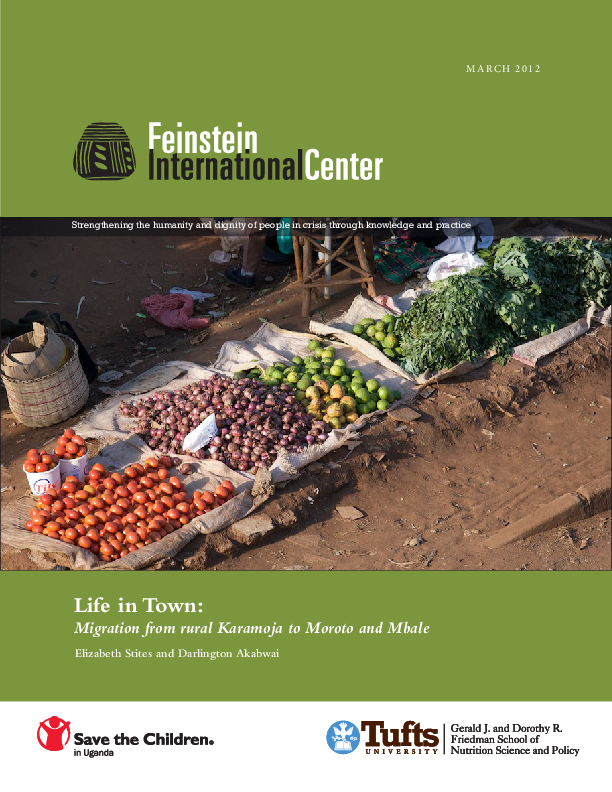
Reports, Study: Research
Life in Town: Migration from rural Karamoja to Moroto and Mbale
Publication year:
2012
English
Format:
pdf (696.3 KiB)
Publisher:
Feinstein International Center, Tufts University
Migration from rural Karamoja to towns, cities and other rural areas has long been part of local livelihood strategies, but attention to this phenomenon by national and international actors in Uganda has grown in recent years. Much of this attention is focused on the population of people from Karamoja living in the larger southern cities such as Kampala and Jinja. Hypothesizing that arrival in these southern cities is the culmination of a longer and more complex rural-urban migration, this study seeks to understand the experiences of migrants in Moroto town and Mbale as examples of stepping stone locations in the larger migratory process. The last in a series of collaborative projects with Save the Children in Uganda, this study examines the livelihood strategies of people who are living in urban and peri-urban areas on a permanent or transitory basis. The report examines reasons for leaving the rural areas, economic activities in the urban settings, and the challenges and opportunities of urban life. The study finds that while urban life brings many hardships, the vast majority of respondents are better off in regard to physical security and food security. Hunger and insecurity are the two most pervasive complaints in rural areas, and the improvements in these aspects make clear the attraction of life in the towns.
Read full abstract
Authors
View & Download
English
1 Documents
Document information
Authors
Format
Content type
Country
Region
Rights
© Author/Publisher
Found a mistake? Help us improve!
If you have noticed a document assigned to the wrong author or any other inaccuracies, let us know! Your feedback helps us keep our data accurate and useful for everyone.
Share
Link
